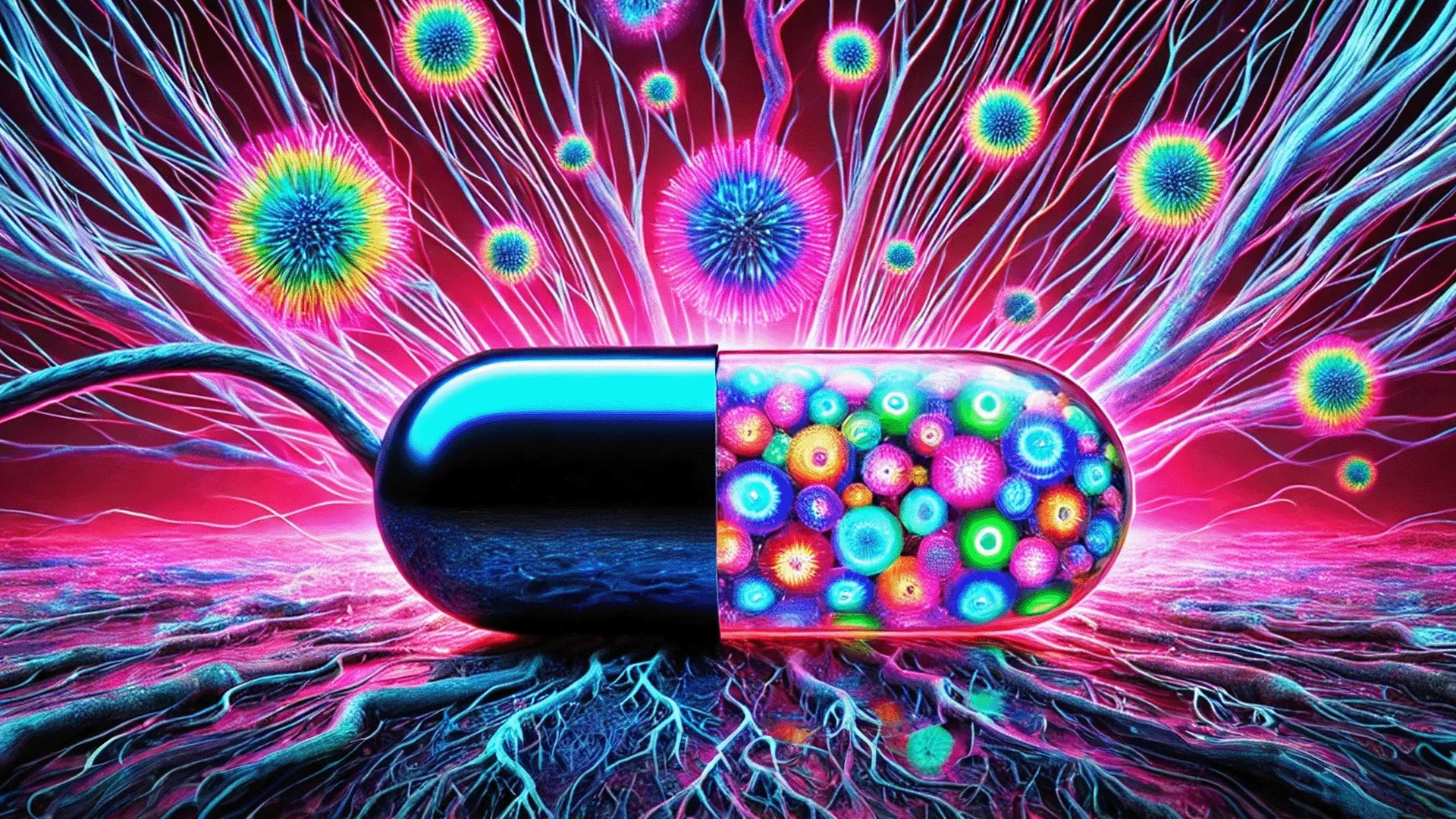Imagine stepping into a future where recreational drug use is no longer fraught with the risks of addiction, severe side effects, and unpredictabili
Imagine stepping into a future where recreational drug use is no longer fraught with the risks of addiction, severe side effects, and unpredictability. As advances in artificial intelligence (AI) and nanotechnology continue to unfold, a bold new frontier emerges: AI-powered nano recreational drugs. These futuristic substances could transform the way society views and engages with recreational drug use, creating tailored experiences that prioritize safety, well-being, and personal preference. Let’s dive into how this groundbreaking innovation could redefine our approach to pleasure and health.
The Intersection of AI and Nanotechnology: Building a Safe, Custom High
At the heart of this concept lies the seamless integration of AI and nanotechnology—two of the most disruptive technologies of the 21st century. While AI has revolutionized fields such as healthcare, robotics, and data analysis, nanotechnology has brought microscopic precision to the manipulation of materials at the molecular level. When combined, these technologies could form a new class of recreational substances known as AI Nano Drugs.
These substances would depart from the conventional understanding of drugs, which often come with significant risks such as addiction and harmful side effects. Instead, AI Nano Drugs would be bio-engineered to work in harmony with the human body, offering personalized, controlled, and safe experiences.
1. Personalized Highs: User-Centric Experiences
Imagine a night out where everyone enjoys a unique and tailored experience, free from concerns about overindulgence or dangerous reactions. AI-driven nanobots could be designed to interact directly with the body’s neural pathways, stimulating neurotransmitters and hormones in real-time to produce effects that align perfectly with the user’s preferences.
How Would This Work?
AI algorithms would power nanobots capable of reading and responding to the body’s signals. Users might begin their experience by selecting a preset mode—be it a gentle euphoria, a calming state of relaxation, a surge in creativity, or an immersive, heightened sensory state. The nanobots would then release specific neurotransmitter-mimicking compounds that stimulate the desired effects. By continually assessing real-time biological data, the AI could adjust the type and amount of compounds to maintain equilibrium, ensuring an optimal experience free from common side effects like paranoia or nausea.
Example of Personalization in Action:
- Dynamic Adjustment: If a user’s heart rate spikes or their body shows signs of stress, the nanobots could lower the dose or temporarily pause the release of stimulating compounds.
- User Profiles: These nanobots would be capable of learning and adapting to a person’s past experiences. Each session would become increasingly personalized, creating an evolving profile for more precise future interactions.
2. The Role of Artificial Intelligence
The role of AI extends far beyond basic command and control. In this context, AI would be the orchestrator, ensuring that the interaction between nanobots and the human body remains safe, effective, and adaptable.
Machine Learning and Safety
By employing advanced machine learning algorithms, the AI could anticipate user reactions based on past data and make rapid adjustments to avoid negative outcomes. This form of real-time learning and prediction could prevent overstimulation and maintain the balance of neurotransmitter levels, effectively eliminating the potential for a harmful overdose.
Check out how Camu Camu can benefit your daily health, click here to find more.
Preventing Tolerance Build-Up
One critical advantage of AI-powered drugs is the built-in intelligence to vary compound delivery and maintain efficacy without leading to tolerance build-up. Unlike conventional drugs, where repeated use can require higher doses to achieve the same effect, these nanobots would carefully modulate their output to mimic a natural response, minimizing the risk of dependence.
Safety First: The Non-Addictive Nature of AI Nano Drugs
One of the most contentious issues surrounding traditional recreational drugs is their potential for addiction and harmful long-term effects. AI Nano Drugs, however, would be explicitly engineered to bypass these pitfalls.
1. No Risk of Addiction
Addiction occurs when a substance rewires the brain’s reward system to create compulsive behavior. AI Nano Drugs would use controlled, non-addictive stimulation to trigger pleasure without establishing dependency. By modulating neurotransmitter mimicry to avoid reinforcing compulsive use, these nanobots would allow users to experience enjoyable states without addiction risk.
2. Built-In Safeguards and Session Control
Safety measures would be an integral feature of these substances. AI algorithms could program the nanobots to cease operation if the body shows signs of overstimulation, dehydration, or any form of distress. Users could even set personal usage limits, enabling a form of self-regulation and giving peace of mind.
Moreover, post-session reports could provide health data insights, ensuring that users understand the impact and recovery process after each use. Built-in rest periods could also be implemented, with the nanobots remaining dormant until it’s biologically safe for another experience.
How Would Society Adapt?
The advent of AI-powered nano recreational drugs would not only revolutionize personal experiences but also impact broader societal norms, healthcare practices, and even legal frameworks.
1. A New Era of Socialization
Imagine attending a music festival or a house party where each attendee can engage in safe, personalized experiences that enhance social interactions without hangovers or long-term health risks. With such precision, the potential for accidents and harmful behavior would drop significantly. AI Nano Drugs could cultivate a culture of responsible, enjoyable recreation, where the focus is on well-being rather than reckless consumption.
2. Expanding the Realm of Mental Health and Therapy
One of the most promising uses of this technology could be in therapeutic applications. Traditional medications for mental health often come with significant side effects and the risk of dependency. AI Nano Drugs could offer a new form of treatment, allowing patients with anxiety, PTSD, or depression to safely explore guided emotional resets.
These nanobots could be programmed to release stress-reducing compounds in controlled environments, creating a temporary mental break that’s non-addictive and safe. The potential for AI Nano Drugs to work alongside traditional therapy could redefine mental health treatment, making emotional and psychological recovery more accessible and effective.
Challenges and Ethical Considerations
While the benefits of AI-powered nano recreational drugs are tantalizing, their development would face significant hurdles and provoke complex ethical discussions.
1. Regulation and Oversight
Ensuring safety while maintaining accessibility would require stringent regulatory frameworks. Governments and health organizations would need to create policies to oversee the production, distribution, and responsible usage of these substances. Would such regulation stifle innovation or foster trust in these new technologies? The balance would be delicate.
2. The Danger of Misuse
Despite the built-in safety measures, potential misuse remains a concern. How could we prevent unauthorized modifications to the AI programming? Or the creation of black-market versions with removed safeguards? These are questions that regulators, scientists, and ethicists would need to address.
3. Social Inequality and Access
As with most cutting-edge technologies, affordability and accessibility could become significant barriers. If these drugs are costly, they might deepen existing social divides, creating a new form of privilege where only the wealthy can access safe, enhanced experiences.
Public Perception and Shifting Attitudes
Transitioning public perception from viewing these substances as “drugs” to seeing them as tools for cognitive and recreational enhancement would be key. The stigma surrounding drug use is deeply entrenched, and education would play a critical role in helping society understand the differences between traditional substances and AI-powered nano-drugs. Transparent communication about safety protocols, benefits, and limitations would be essential in garnering public trust.
Conclusion: A Paradigm Shift in Recreation and Health
While the concept of AI-powered nano recreational drugs may sound like something from a science fiction novel, the technological groundwork is already being laid. With the fusion of biology, artificial intelligence, and nanotechnology, humanity could soon redefine its relationship with recreational experiences. This evolution marks not just the creation of a new class of drugs, but a broader shift in how we view pleasure, health, and the enhancement of human experiences.
These AI-powered nano substances promise to be more than just futuristic novelties; they offer a vision of personalized, addiction-free, and safe recreational use, reshaping societal norms and promoting well-being. If developed responsibly, AI Nano Drugs could indeed lead to a world where humans enjoy the benefits of cognitive and sensory enhancement without the dangers of addiction and side effects. This future may be closer than we think, promising an era of safer, more controlled, and customizable experiences.
Check out how Camu Camu can benefit your daily health, click here to find more.



COMMENTS